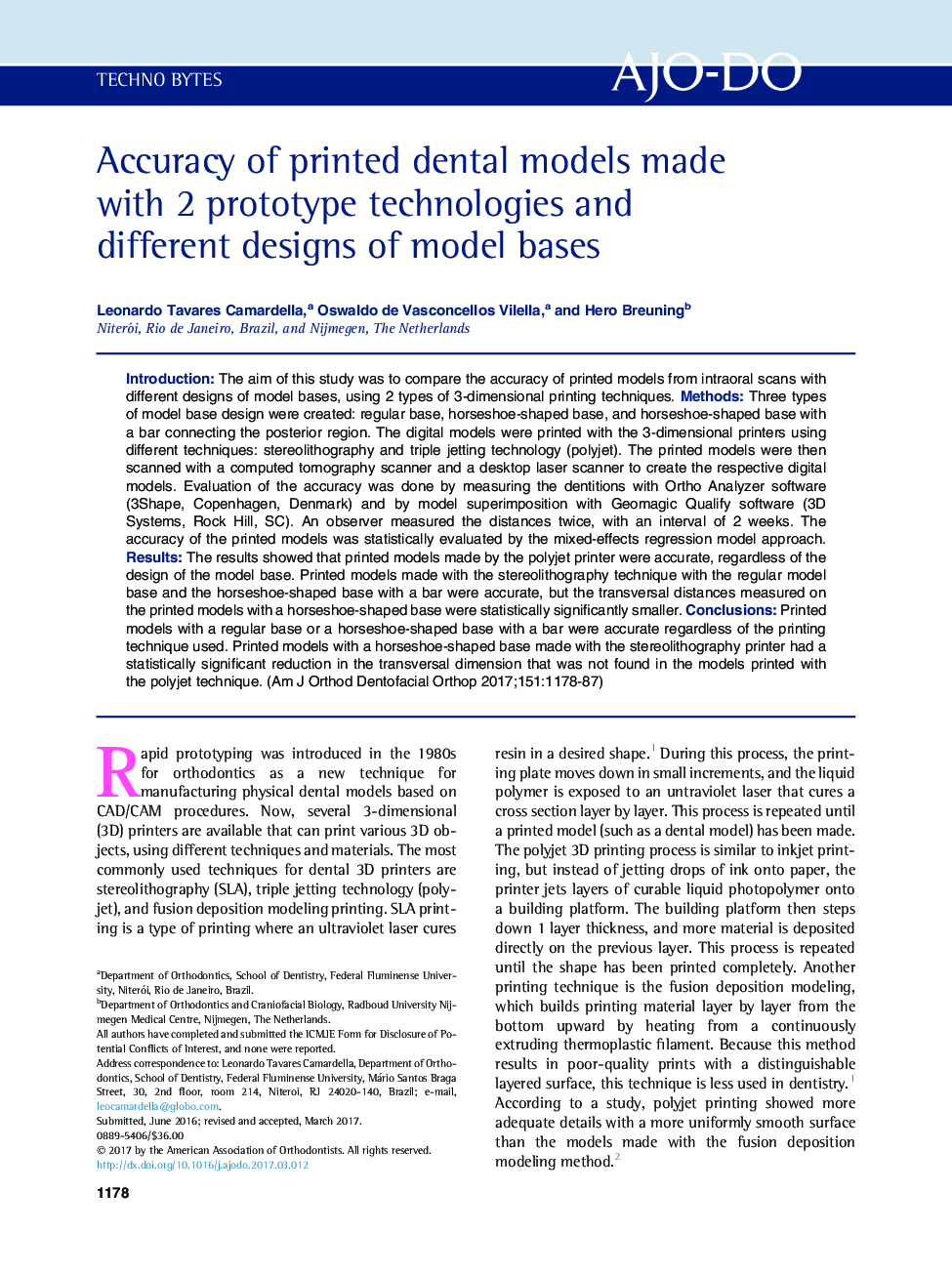| Article ID | Journal | Published Year | Pages | File Type |
|---|---|---|---|---|
| 5637617 | American Journal of Orthodontics and Dentofacial Orthopedics | 2017 | 10 Pages |
â¢Printed models by SLA technology with a horseshoe-shaped base have a transversal contraction.â¢Printed models by SLA technology with a horseshoe-shaped base and a bar are accurate and similar to the models with a regular base.â¢Printed models by polyjet technology are accurate, regardless of the model base design.
IntroductionThe aim of this study was to compare the accuracy of printed models from intraoral scans with different designs of model bases, using 2 types of 3-dimensional printing techniques.MethodsThree types of model base design were created: regular base, horseshoe-shaped base, and horseshoe-shaped base with a bar connecting the posterior region. The digital models were printed with the 3-dimensional printers using different techniques: stereolithography and triple jetting technology (polyjet). The printed models were then scanned with a computed tomography scanner and a desktop laser scanner to create the respective digital models. Evaluation of the accuracy was done by measuring the dentitions with Ortho Analyzer software (3Shape, Copenhagen, Denmark) and by model superimposition with Geomagic Qualify software (3D Systems, Rock Hill, SC). An observer measured the distances twice, with an interval of 2Â weeks. The accuracy of the printed models was statistically evaluated by the mixed-effects regression model approach.ResultsThe results showed that printed models made by the polyjet printer were accurate, regardless of the design of the model base. Printed models made with the stereolithography technique with the regular model base and the horseshoe-shaped base with a bar were accurate, but the transversal distances measured on the printed models with a horseshoe-shaped base were statistically significantly smaller.ConclusionsPrinted models with a regular base or a horseshoe-shaped base with a bar were accurate regardless of the printing technique used. Printed models with a horseshoe-shaped base made with the stereolithography printer had a statistically significant reduction in the transversal dimension that was not found in the models printed with the polyjet technique.
